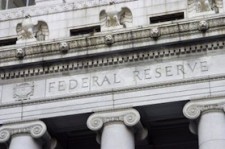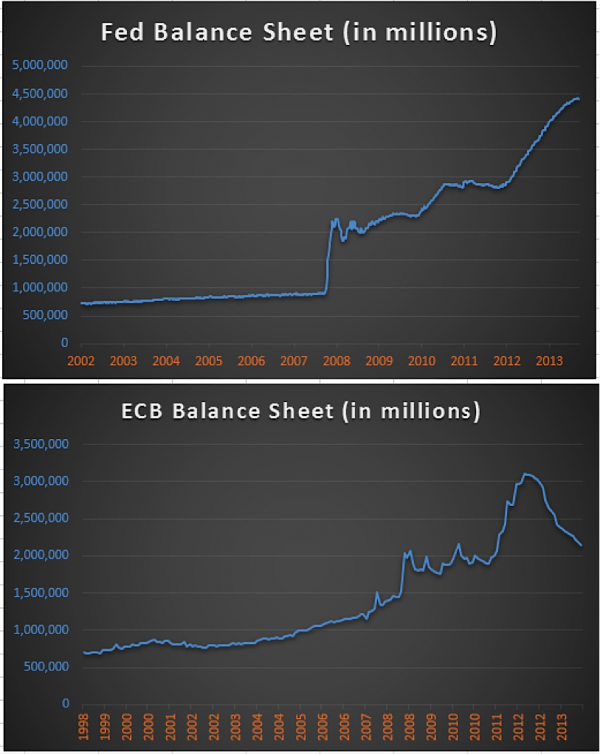 You might not be an expert in balance sheets (I’m sure not), but I’m guessing you’ll be able to tell the major difference between what the Federal Reserve has done differently from the European Central Bank over the past few years.
You might not be an expert in balance sheets (I’m sure not), but I’m guessing you’ll be able to tell the major difference between what the Federal Reserve has done differently from the European Central Bank over the past few years.
Just check out the chart below, highlighting their respective balance sheets. In the face of an economy that needed a lot of help, the Federal Reserve continued to buy massive amounts of bonds in an effort to keep rates low and get the economy moving again. The ECB took a different route and did the opposite.
Federal Reserve vs European Central Bank Balance Sheets
Well, the US economy is finally showing real signs of improvement lately (GDP over 4%, big improvements in housing, and earnings growth last quarter up over double digits year-over-year). In fact, the Federal Reserve has been steadily slowing the bond purchases the past few months and the economy isn’t falling flat on its face like a lot of economists predicted.
Turning to the ECB, there are some real problems, as they are on the brink of a recession in many countries. This lead to the announcement on Thursday that the ECB will start buying asset-backed securities in an attempt to jump start the economy. European Central Bank President Mario Draghi said the aim is for the ECB’s balance sheet to get back to the level it was at the start of the 2012. Back then the bank had about 2.7 trillion euros of assets versus about 2 trillion euros currently.
For any more on this intriguing development, I’d advise you follow my pal Andrew Kassen, as he knows more about these developments and how they affect us than just about anyone out there.
Any opinions expressed herein are solely those of the author, and do not in any way represent the views or opinions of any other person or entity.








